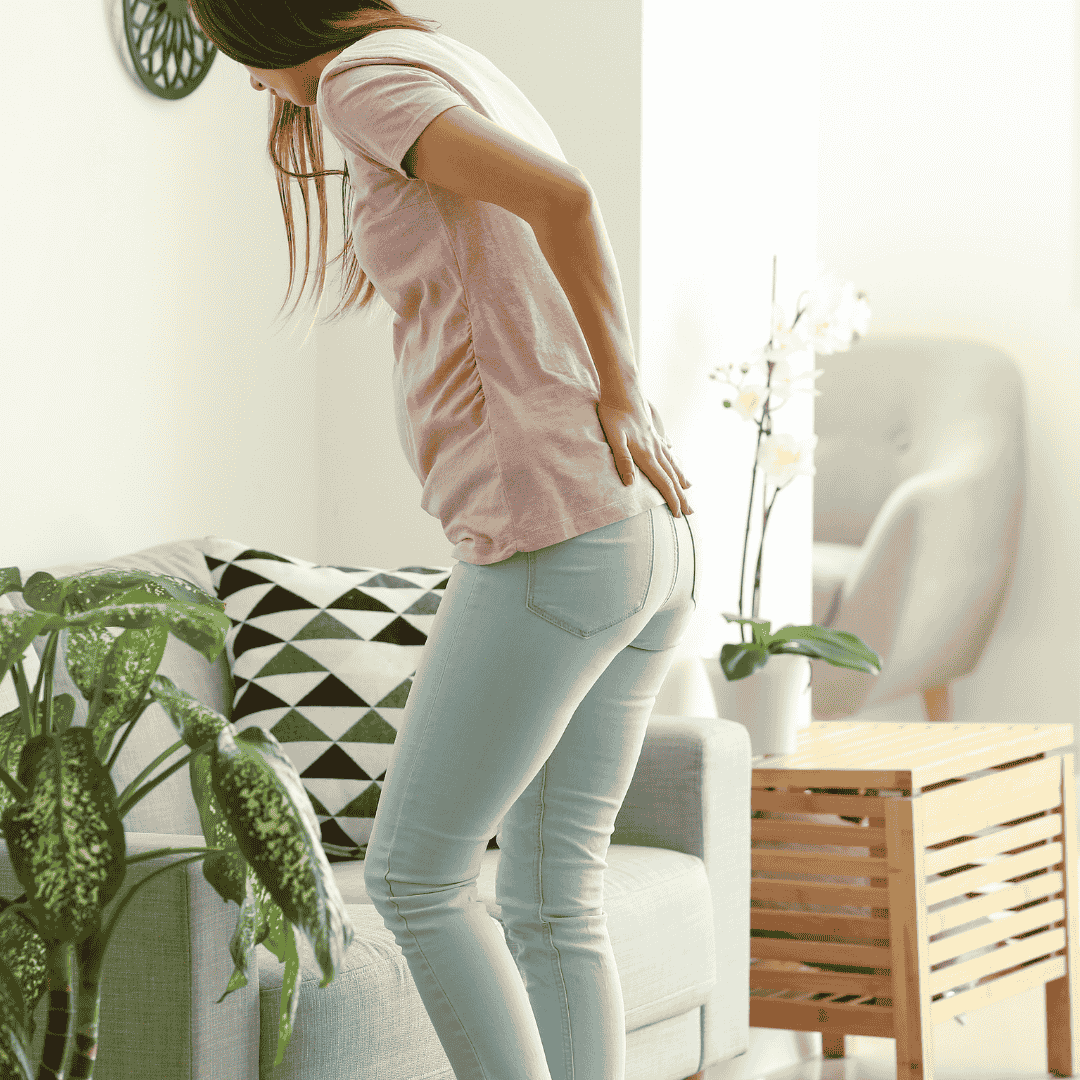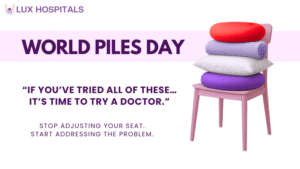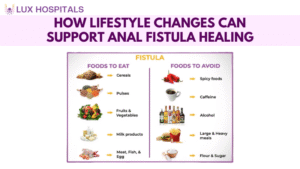5 Critical Anal Fissure Symptoms in Women to Watch

Introduction
Imagine feeling a sharp, stinging pain every time you use the restroom. This is a reality for many women suffering from anal fissure symptoms in women—a condition that can make even the most basic daily activities uncomfortable.
Anal fissure symptoms in women are surprisingly common. Factors like childbirth, hormonal changes, and chronic constipation can increase the risk. Despite this, many women hesitate to discuss these symptoms, often delaying treatment. Understanding anal fissure symptoms in women and the associated risks is crucial for early diagnosis and effective care.
Understanding Anal Fissures
An anal fissure is a small tear or cut in the sensitive lining of the anus. This tear can cause sharp pain, especially during and after bowel movements, as the sensitive nerve endings in this area are exposed. While it’s a relatively common condition, the discomfort it causes can significantly impact daily life.

Anal fissures can develop for various reasons, but certain causes are particularly prevalent among women:
- Childbirth: The physical strain of childbirth can lead to the development of anal fissures. The pressure exerted during delivery, especially during prolonged labor, can cause tears in the anal lining.
- Hormonal Changes: Hormonal fluctuations, particularly during pregnancy or the menstrual cycle, can lead to changes in bowel habits. For example, some women experience constipation during these times, which increases the risk of developing anal fissures.
- Constipation: Chronic constipation is one of the most common causes of anal fissures. When stools are hard and difficult to pass, they can cause small tears in the anal lining. Women, especially during pregnancy, are often more prone to constipation due to hormonal changes and dietary factors.
These causes highlight why women may be at a higher risk for developing anal fissure symptoms in women and why it’s important to understand and address these symptoms early on.
Symptoms of Anal Fissures in Women
Pain During Bowel Movements:
One of the most prominent symptoms of an anal fissure is a sharp, burning pain during or immediately after a bowel movement. This pain can be intense and may last for minutes to hours after using the bathroom. For some women, this pain can be so severe that they start avoiding bowel movements altogether, which can lead to further complications like constipation. It’s important to note that this pain is often mistaken for other conditions, such as hemorrhoids or even urinary tract infections, making it crucial to pay attention to the specific symptoms and seek a proper diagnosis.
Bleeding:
Another common symptom of an anal fissure is the presence of bright red blood, either on toilet paper or in the stool. This bleeding is usually mild, but it can be alarming. It’s caused by the tear in the anal lining being irritated during bowel movements. Unlike other conditions that cause bleeding, the blood from an anal fissure is typically bright red and fresh, indicating it’s coming from a surface tear rather than deeper in the digestive tract.
Itching or Irritation:
Persistent itching or irritation around the anus is also a common symptom of anal fissures. This discomfort can be constant and may worsen after bowel movements. The itching is often due to the healing process of the fissure or the skin’s reaction to the tear. This can be particularly bothersome and may interfere with daily activities, contributing to the overall discomfort and frustration women feel when dealing with this condition.
Visible Crack or Tear:
In some cases, women may be able to see a small crack or tear near the anus. This visible sign of an anal fissure is usually a thin, red line or small ulceration. While not always noticeable without a medical examination, this tear is a clear indication of an anal fissure and a source of the associated pain and bleeding.
Spasms in the Anal Sphincter:
Anal fissures can also trigger involuntary muscle spasms in the anal sphincter. These spasms, which are the body’s natural response to pain, can cause further discomfort and make the fissure harder to heal. The tightness from these spasms can increase the pain during bowel movements and even extend the duration of the pain afterward, creating a cycle of discomfort that can be difficult to break without treatment.
Specific Considerations for Women
Postpartum Women:
Childbirth significantly increases the risk of developing anal fissures. The physical strain during delivery, especially in prolonged or difficult labors, can cause tears in the anal lining. Postpartum women may experience more severe symptoms, such as heightened pain and prolonged healing time, due to the added pressure and trauma from childbirth.
Impact of Menstrual Cycle:
Hormonal fluctuations during the menstrual cycle can lead to changes in bowel habits, often resulting in constipation or diarrhea. These shifts can exacerbate the symptoms of anal fissures, making the pain and discomfort more intense during certain phases of the cycle.
Connection with Other Female Health Issues:
Conditions like hemorrhoids or pelvic floor dysfunction, which are more common in women, can overlap with the symptoms of anal fissures. For instance, both hemorrhoids and fissures can cause pain and bleeding, while pelvic floor issues might contribute to constipation, increasing the risk of fissures. Recognizing these connections is important for accurate diagnosis and effective treatment.
When to Seek Medical Attention
If you notice any of the following symptoms, it’s crucial to seek medical attention promptly:
- Severe, persistent pain that doesn’t improve with home care.
- Heavy or continuous bleeding during or after bowel movements.
- Visible signs of infection such as increased redness, swelling, or discharge near the anal area.
- Difficulty passing stools due to pain or muscle spasms, leading to chronic constipation.
Early diagnosis and treatment of anal fissure symptoms in women are crucial to prevent complications like chronic fissures or infections. Ignoring these symptoms can lead to prolonged discomfort and more complex medical issues. Don’t hesitate to consult a healthcare provider if you notice any of these warning signs of anal fissure symptoms in women. Early intervention can lead to faster healing and a return to normal activities.
Preventive Measures
Preventing anal fissures, especially for women, involves a few simple yet effective lifestyle adjustments:
- Maintain a Healthy Diet: Eating a diet rich in fiber, including fruits, vegetables, whole grains, and legumes, can help keep stools soft and easy to pass. This reduces the strain during bowel movements, lowering the risk of developing anal fissures.
- Stay Hydrated: Drinking plenty of water throughout the day is essential for preventing constipation. Adequate hydration helps keep stools soft and prevents them from becoming hard and difficult to pass, which can cause tears in the anal lining.
- Manage Constipation: To avoid constipation, try to establish regular bowel habits, avoid straining during bowel movements, and consider using a stool softener if necessary, especially during periods of hormonal changes or pregnancy when constipation is more common.
- Practice Good Bathroom Habits: Don’t ignore the urge to go, and avoid sitting on the toilet for extended periods, as this can increase pressure on the anal area. Also, practicing good hygiene by gently cleaning the area can prevent irritation that might lead to fissures.
By following these tips, women can significantly reduce their risk of developing anal fissures and maintain better overall digestive health.
Conclusion
In conclusion, recognizing anal fissure symptoms in women early and taking preventive measures can make a significant difference in managing this condition. Women, in particular, should be aware of the risks associated with childbirth, hormonal changes, and other health issues that may contribute to anal fissure symptoms in women.
If you’re experiencing any of the symptoms discussed, it’s important to seek medical advice promptly. Lux Hospitals in Hyderabad offers specialized care for conditions like anal fissures. Don’t hesitate to consult their experts for a proper diagnosis and effective treatment plan. Take the first step towards relief and better health today.
Frequently Asked Questions
The most common symptoms include sharp pain during bowel movements, bright red blood on toilet paper or in the stool, itching or irritation around the anus, and in some cases, visible tears near the anal opening.
While both conditions can cause pain and bleeding, anal fissures typically cause sharp, burning pain during or after bowel movements, whereas hemorrhoids often cause itching and swelling along with bleeding.
Yes, hormonal changes during menstruation can exacerbate symptoms like pain and constipation, making anal fissures more uncomfortable during this time.
Absolutely. The physical strain of childbirth can increase the risk of developing anal fissures, and postpartum women may experience more severe symptoms due to the added pressure and trauma.
If you notice symptoms like pain or bleeding during pregnancy, it’s important to consult a healthcare provider for advice on safe treatment options that can help alleviate discomfort and prevent complications.
You should seek medical attention if the symptoms are severe, persistent, or accompanied by heavy bleeding, signs of infection, or difficulty passing stools, as early treatment can prevent complications.




















